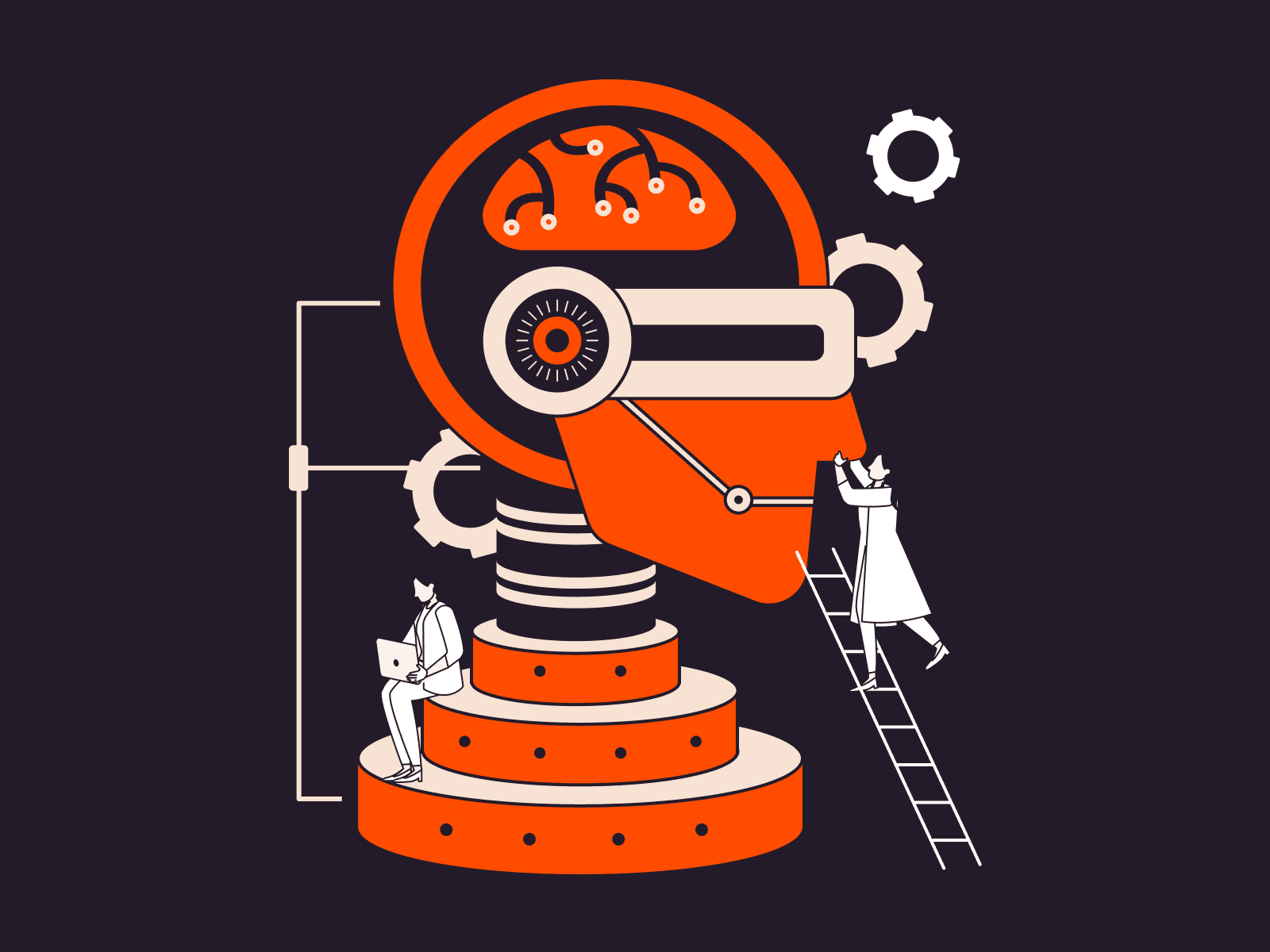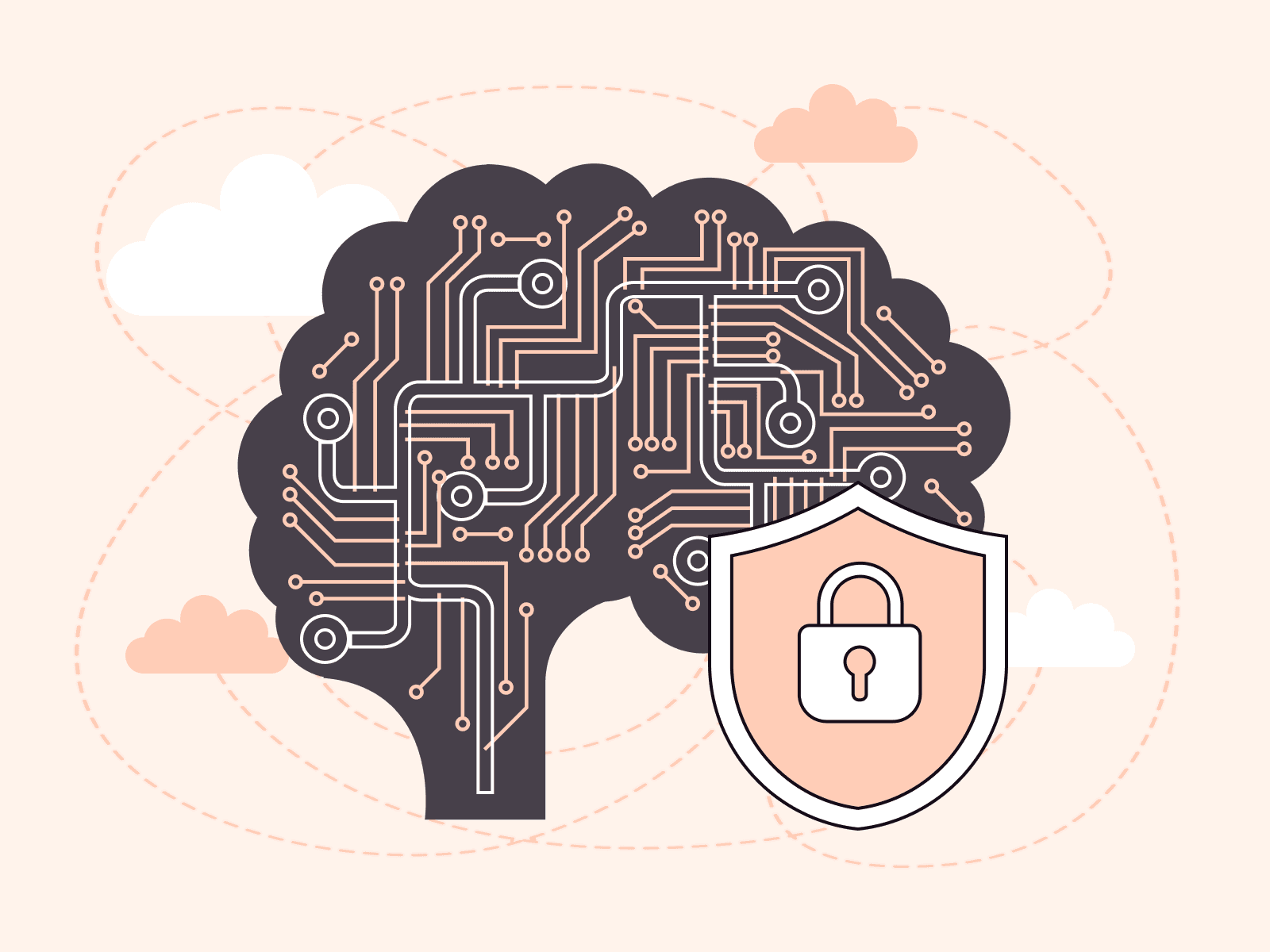Real-World Applications of AI Inference at the Edge: Transforming Industries
- By Gcore
- June 14, 2024
- 5 min read

AI inference at the edge (IatE) runs artificial intelligence on edge points of presence, close to where data is used. This speeds up data processing for faster results for your end users. In this article, we’ll explore how inference at the edge is reshaping gaming, media and entertainment, technology, and telcos. But first, let’s look at why exactly inference at the edge matters for your business, no matter your industry.
Why AI Inference at the Edge Is Important for Businesses
AI inference at or near the edge refers to trained AI models that are available on points of presence physically closer to the user’s devices than is the case in cloud inference. As a result, devices like sensors or cameras get AI responses faster, allowing them to get AI responses on new data in near-real time.
This setup benefits businesses by reducing latency, which enhances user experiences and enables the real-time decision making essential to certain AI use cases, such as autonomous vehicles, industrial automation, and IoT devices. It can also improve data privacy and security by processing data locally, reducing the need to transmit sensitive information to centralized cloud servers.

Four major business benefits of edge inference are reduced bandwidth, lower latency, enhanced security, and less downtime.
- Reduced bandwidth: Running AI inference at the edge reduces the amount of data that needs to be sent over the network. This means companies can use less bandwidth and, by extension, save on costs.
- Lower latency: AI inference at the edge dramatically decreases latency as data doesn’t need to travel back and forth to the cloud.
- Enhanced security: From a security perspective, edge AI inference enhances compliance and protects personally identifiable information against cyberthreats, crucial for industries like finance and telemedicine. Using federated learning, companies can collaboratively update AI models without sharing underlying data, optimizing strategic planning and security without risking sensitive information.
- Less downtime: Edge AI’s ability to operate without continuous cloud connectivity allows deployment in areas with limited cloud connectivity, like remote agricultural sites or developing areas. Devices remain functional even during network disruptions, reducing data transmission costs, preventing downtime-related financial losses, and offering a smoother and more positive customer experience.
AI Inference at the Edge Applications by Industry
AI inference at the edge offers exciting and innovative opportunities across industries. Let’s explore its impact on gaming, media and entertainment, technology, and telcos, highlighting the business benefits it delivers.
Gaming
In the gaming industry, AI inference at the edge revolutionizes player interaction and game environment management. By positioning AI at the network’s edge, developers can deliver richer, more responsive gaming experiences, catering to players’ demands for faster and more immersive gameplay.
AI-driven content and map generation can occur on the fly, adapting to players’ actions in real time. This makes gaming worlds more engaging and interactive, as environments evolve based on player behavior. Non-player characters (NPCs) can react intelligently, enhancing strategic gameplay and storytelling. This is enabled by sophisticated AI algorithms that process data directly on gaming consoles and PCs, ensuring instantaneous and fluid actions crucial for competitive gaming.
Real-time player analytics offer a significant advantage in multiplayer scenarios. AI inference at the edge can analyze data closer to its source, allowing games to offer personalized experiences and adjust challenges in real time. This maintains the balance and fairness essential for competitive play, increasing player engagement and overall satisfaction.
Vision Processing Units (VPUs) handle complex visual data at the edge, empowering advanced computer vision applications for augmented reality (AR) and virtual reality (VR) experiences. These co-processors enable detailed environments and realistic interactions, pushing the boundaries of what games can offer.
Media and Entertainment
AI inference at the edge (AI IatE) facilitates highly personalized media consumption. For instance, streaming platforms can use AI to tailor viewing suggestions based on real-time analysis of user behavior. By analyzing viewing habits on edge nodes near the device, the system can adjust recommendations each time the user interacts with the service. This speeds up the process, enhances viewer engagement, and improves privacy, as sensitive data remains close to the user’s device. This immediacy is key to maintaining viewer interest and reducing subscription cancellations.
In live sports broadcasting, AI IatE can overlay real-time stats and insights onto the broadcast feed, tailored to the viewer’s preferences. This includes offering multiple camera angles and interactive features, allowing fans to engage more actively with the content. Additionally, AI IatE enables seamless integration of VR graphics into live video feeds, enriching the user experience with minimal hardware requirements.
Advertising also benefits significantly from AI inference at the edge. Advertisers can analyze viewer data near the device and deliver targeted information and product recommendations that match viewer preferences without delays, increasing viewer interest and engagement.
One application of AI IatE in media and entertainment is enhancing VR systems like Microsoft’s HoloLens. Besides gaming, HoloLens is used in media and entertainment, utilizing advanced sensors and cameras to map physical environments and overlay digital content seamlessly. AI IatE allows HoloLens to analyze and depict complex environments in real-time, enabling viewers to immerse themselves in news stories and other content.
Technology
In the technology sector, AI inference at the edge (AI IatE) streamlines content creation closer to users’ devices. Apps using edge inference can instantly generate personalized music or virtual environments based on the user’s current mood or settings without sending data to distant servers.
Inference at the edge also enhances tech support. Its local inference capability allows for faster and more accurate chatbot and virtual assistant interactions, improving customer satisfaction with more fluid and responsive support.
Software engineers benefit from edge inference through tools like automated debugging and real-time code suggestions. Local inference provides immediate feedback, speeding up development and improving code quality.
Data augmentation at the edge involves enhancing real-time data streams with additional, synthetically generated data to train machine learning models closer to the device. This results in more accurate predictions and analyses, especially useful in scenarios where data privacy is crucial, such as personalized health monitoring or predictive maintenance in manufacturing.
Gcore uses inference at the edge in two tools available for free:
- Gcore AI Image Generator uses edge computing for instant visual content creation, enabling users to generate images directly from text descriptions. It crafts high-quality images in various styles, ideal for marketing materials, design processes, and presentations.
- Gcore Speech-to-Text Translation processes voice inputs near-locally and converts them into text instantly, enabling smooth multilingual interactions essential for global business operations and diverse customer support.
Telecommunications
AI IatE in telecommunications ensures improved service reliability, enhanced customer experience, and efficient disaster management, making it a critical technology for the industry.
With GPUs and 5G networks, telecoms can generate real-time insights into traffic conditions, pedestrian safety, and parking, improving service delivery and urban management. This capability ensures reliability during peak usage times and allows for preemptive maintenance, reducing downtime and costs.
For example, China Mobile leverages AI edge inference with drones connected over its 5G network to detect wildfires in remote areas. These drones provide real-time data to emergency centers, enabling more effective resource deployment and potentially saving lives.
Conclusion
AI inference at the edge is transforming industries by bringing data processing closer to end-user devices, resulting in faster and more efficient operations. This technology offers significant benefits such as reduced latency, enhanced security, and continuous operation even in areas with limited connectivity. Its applications span gaming, media and entertainment, technology, and telecommunications, demonstrating the potential to revolutionize user experiences and operational efficiencies across various sectors.
If you’re ready to enhance your business operations with edge inference, consider Gcore Inference at the Edge. Equipped with powerful NVIDIA L40S GPU infrastructure and a global network of 180 PoPs to ensure quick response times, Gcore makes edge inference simple to use.
Related articles
Subscribe to our newsletter
Get the latest industry trends, exclusive insights, and Gcore updates delivered straight to your inbox.





